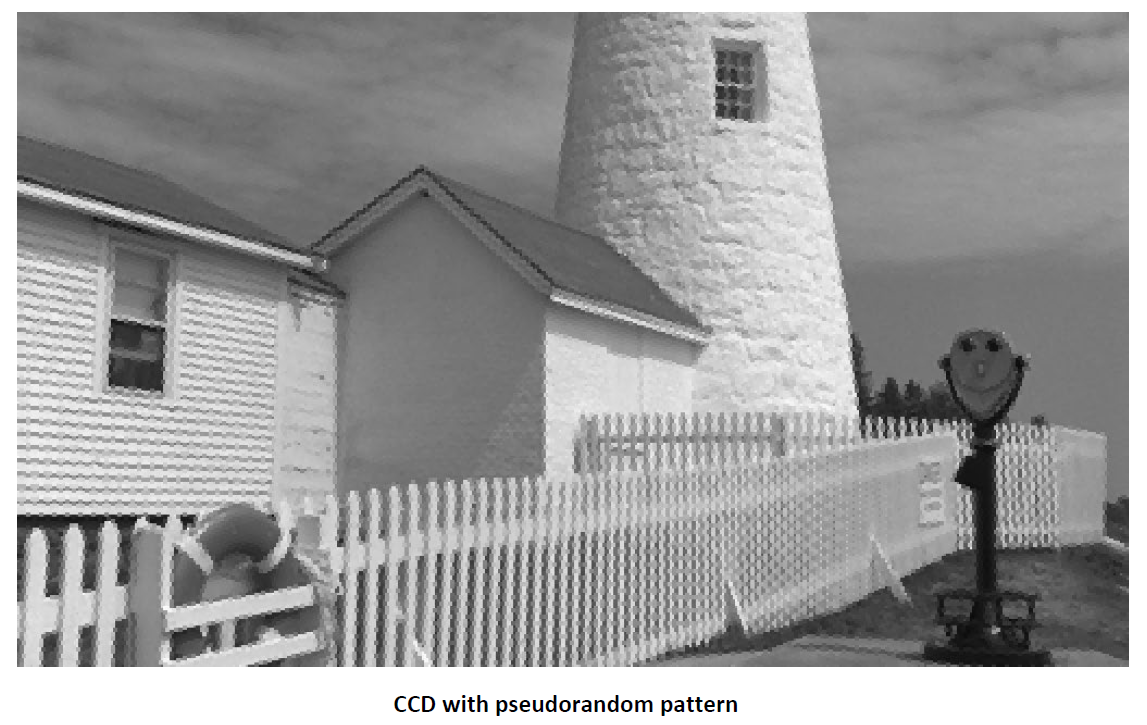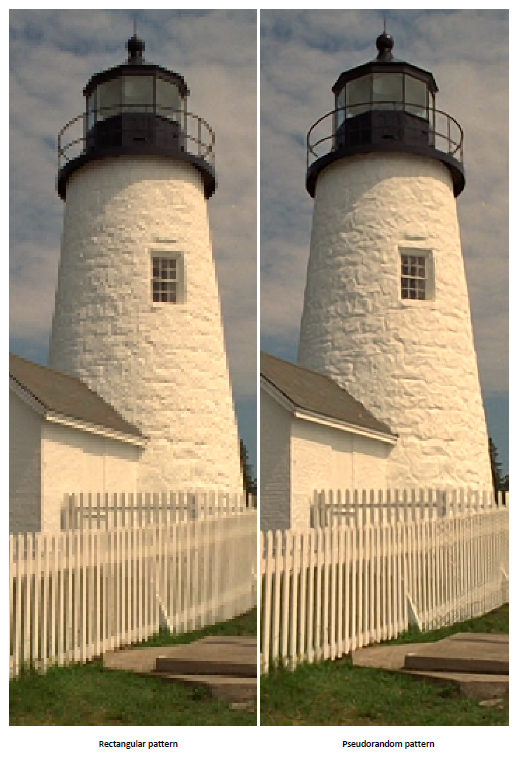Field Of Interest
The present invention relates to an analog signal capturing devices generally and monochrome or color image capture sensors, such as a scanner or a Charge-Coupled-Device (“CCD”) for video and photo camera in particular, which are almost free from moiré and aliasing. The present invention relates to methods for enhancing the resolution of an image capture device and device for digital color/grey image displaying also.
Cross-reference To Related Applications
This invention is related to U.S. patent application Ser. No. US 07/222,201, filed by Paul J. Steinhardt, Philip Taylor on 21 July 1988 and U.S. patent application Ser. No. US 10/015,492, filed by Viktors Berstis on Dec. 13, 2001 and U.S. patent application Ser. No. US 09/551,143, filed by Hideaki Yoshida, Hatsuo Shimizu on 14 April 2000 and, the contents of which are incorporated by these references.
Background Of The Invention
Almost all modern devices of capturing apply sampling technique consisting of rectangular patterns of elements of the constant size on a regular grid for image capturing or regular temporary sampling for one-dimensional signals like a sound. One of the main disadvantages for such sampling methods is effect from spatial or temporary frequency interference between local features of a capturing signal (for image capture: lines and edges) and spatial or temporary sampling method properties. For image capture devices such characteristic is the type of an applied pixel pattern, for example. As a result of such intervention, gross distortions in the restored signal are appearing. For example, at restored image the risk of emergence of moiré or aliasing is rather high. In audio signal usually appears false frequency that was not initially at the original. Therefore there is need for a method which would allow to avoid are gross distortions at digital image without use of intensive post-processing image technologies, or a high degree of human operator manipulation and editing.
The present invention is directed to overcoming one or more of the problems set forth above and of realization of super resolution simultaneously with this.
Summary Of The Invention
Object of this invention is to provide quality of digital capturing a signal up to quality analog devices of capturing. For the two-dimensional photo or video capturing devices, this invention solves this problem by using the sensitive elements of irregular size and shape, through their sub-pixel shift. For one-dimensional devices of sound capture this invention accomplishes objective by using non-regular temporary sampling.
Object of this invention is also a new adaptive method of super resolution for monochrome digital capturing devices configured on a maximum of restoration accuracy. It is necessary for the synthesis of a set of uniform data for post-processing (such as compression and decompression in JPEG or MPEG formats) or for use in display systems. For digital capture devices such as a color image sensors CCD, embodiments the method of super-resolution are not presented in this invention, although it is also possible.
These two inventions allow doing the digital capturing device like CCD without an anti-aliasing filter. It in turn allows reaching higher resolution with the same megapixel count. Also, the new pattern design allows reducing the visibility of false colors in comparison with patterns like Bayer. The results of modeling showed that the pseudorandom pixels arrangement allows restoring the image with quality almost like an analog capturing.
Result
Advantage of the offered mathematical apparatus of reverse restoration in comparison with usual interpolation methods is confirmed also by opportunity network training on compensation of distortions introduced optical system of the camera or geometrical and spectral features of a sensor. So if takes place distortions like defocusing, smear, noise or chromatic distortions the system in the course of training is capable to consider them and to minimize their influence.
Results of recovery of the image on a pseudo-regular pattern demonstrate that the compromise solution in favor of no absolutely random pattern inevitably leads to the small moiré effect, which sometimes appears on some high-frequency periodic structures. At the same time, are quantitative (by RMSE criterion, see Table 1) and qualitative (subjective) estimates considerably increase. It allows drawing a conclusion, that pseudo-random pattern more effective decision in comparison with regular grid pattern. The result analysis, also allows making the assumption that the applied mathematical apparatus allows to receive result of recovery of the image in practical proximity to a theoretical limit of accuracy. As much more exact results practically aren't possible because of their extreme mathematical complexity and intensity of resources.


At first sight received result of registration of the image looks noisy and unnatural. However in comparison with rasterization on a regular grid such image keeps more useful information about objects. The examples given below clearly demonstrate a difference in results of registration of the image with use of the sensor with a classical regular raster and with the offered pseudorandom raster:


Apparently, the compromise solution in favor of not absolutely random pattern inevitably leads to small residual effect of moiré on high-frequency periodic structures. At the same time with it, it is shown increased quantitative (objective RMS by criterion) and qualitative (subjective) efficiency of the offered method. It proves that the pseudorandom raster is more effective decision in comparison with regular.

Thank you for reading to the end.